the women who partied hard for feminism
how the flappers of the 1920s broke gender norms, with the help of the economy
if you’ve been following me for sometime you know that every week i spotlight one woman or queer person from history that i think hasn’t been talked about enough. today i’m breaking both of those rules by covering a whole group of women who have been talked about a lot. if you haven’t seen flappers as halloween costumes, then you must have read about them in high school in a required f. scott fitzgerald or ernest hemingway novel or heard your coworker talk about how her great grandmother used to be one.
for a relatively small subculture that lasted only 4-5 years (in today’s fast-moving online world, that’s like if a trend lasted just a few weeks) the flappers are practically synonymous with the 1920s. they were a cultural phenomenon who set the stage for every rebellious group of women since and were the original cool girls who are still being talked about, 100 years later.
so for all the newspaper articles and opinion pieces and cultural critiques that these women have endured for a century, why another one? why now? because not only did the flappers break victorian gender norms with reckless abandon, but they’re proof that a prosperous economy is key to women’s freedom.
and i believe they’re due for a comeback.
the rebellious flappers were a direct response to the “gibson girl.” if these terms sound like a tiktok aesthetic of the week, that’s because they were kind of that, of their time. the gibson girl was the “ideal american woman” from the 1890s to the mid 1910s. she had an hourglass figure achieved through a corset, wore minimal makeup, and her hair was styled in elaborate up-do’s - the gibson girl was the clean girl’s great grandmother. the gibson girl was demure, modest, and the beacon of domestic life. she didn’t live for her husband - god no - she had hobbies! like tennis and baking! but the focus was on her softness and marriageability.
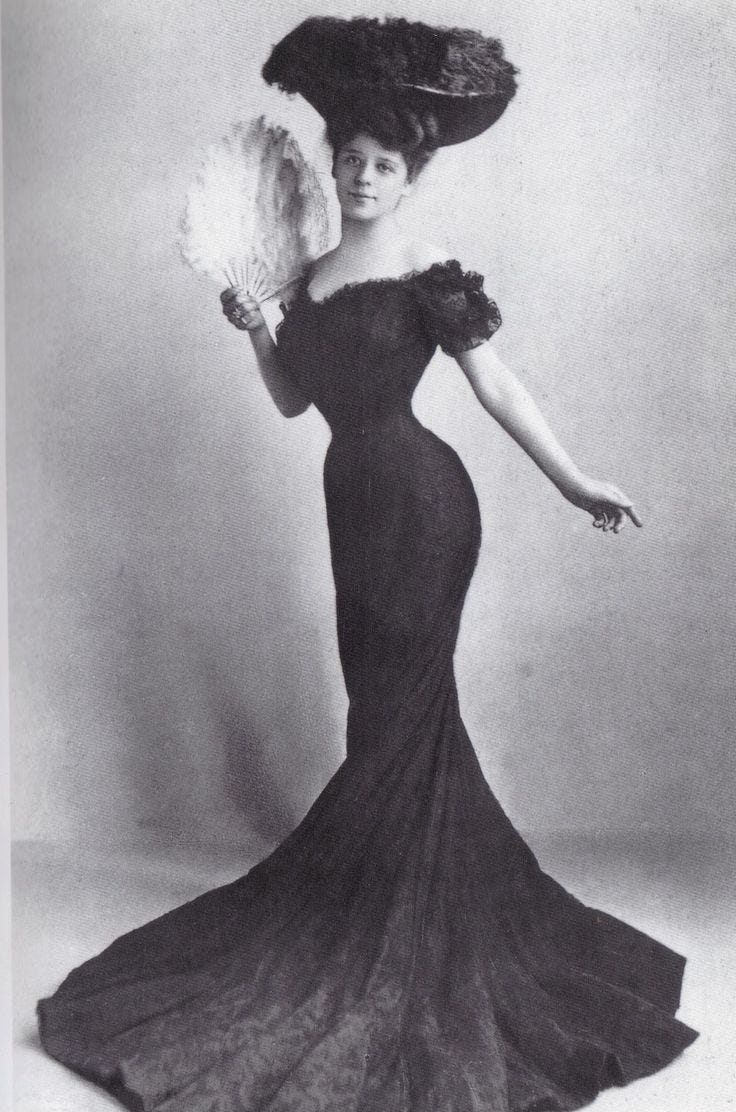
what exactly was happening during the 1890s-1910s? ah of course, the panic of 1893 - a severe depression that ended the prosperous gilded age and led to 20% unemployment. that’s when the subdued, traditional gibson girl reigned supreme. sound familiar?
then world war 1 happened and the gibson girls went to work, taking over the jobs of men who were deployed to fight. when the men came back, it was already too late, women had discovered the freedom of having their own money.
now, the men had come back different too - as one tends to do after staring death in the face. the once priority of settling down, having children took a backseat to the greater priority of I’M ALIVE AND I WANT TO FUCKING PARTY. a new era of free women and reborn men had begun. but unlike the time you and i went through a collective deadly event together, the people of the 1920s had the economy to back up their spirit.
a couple of happy accidents had to occur to really get the 20s to start roaring. one - electricity became widely available to everyone, leading to a boom in household appliances and greater outputs at factories. two - henry ford invented the assembly line to speed up car manufacturing. cars used to be available to only the wealthy and took 12 hours to make. because of the assembly line, cars could be made in 1 hour. the sheer supply brought down the price of a ford model t to - i’m literally tearing up as i write this - $300. three - with the introduction of credit, people could buy things they didn’t have the money to buy - subtle great depression foreshadowing - and suddenly, cars were available to everyone. this led to roads being built, a booming hotel and motel industry, and a rise in tourism.
THE RISE OF THE FLAPPERS
the hemline index is a popular theory in both the economic and fashion communities. it states that when the economy is doing well, skirts get shorter. and when it’s not, skirts get longer. so naturally, the flappers were some of the most scandalously-dressed women of the 20th century. they wore straight, loose-fitting yet short dresses that de-emphasized curves, cut their hair in a short bob and wore a lot of makeup. their unrestrictive clothing was a symbol of their emancipation.
now the flappers didn’t just get the good fortune of an economic boom - they also got some sick new freedoms. in 1920, white women officially got the right to vote. thanks to margaret sanger, birth control was starting to become available - though not without taboo. black flappers - such as josephine baker and baby esther jones - were prominent too, especially in harlem during the harlem rennaissance. and the proliferation of electricity in the average american households meant machines were taking care of a large portion of housework - housework that otherwise was a woman’s full time job.
while the gibson girl was created on a man’s terms, the flapper was created on a woman’s terms. everything the gibson girl represented - quiet, nurturing, wife-material - the flappers rejected. they were loud, fast-talking, and openly smoked and drank alcohol. they listened jazz, drove their own cars, lived in their own apartments, and dated casually. their style, personalities, and lifestyle were an intentional blurring of gender as women sought the freedom that men had.
“why should all life be work, when we can all borrow? let’s think only of today, and not worry about tomorrow.”
-a 19-year-old zelda fitzgerald, “the first american flapper.” 1919.
if the flapper era was our brat summer, then charli xcx is zelda fitzgerald. zelda’s life was characterized by partying, high fashion, and defiance. born in 1900 and growing up with an abusive politician father, zelda’s rebellion started as a way to tarnish her father’s reputation but eventually she grew into a party girl of her own right. she embodied the carefree spirit of the 1920s, her bobbed hair and unapologetic drinking and smoking making its way through the new york and paris social circles. according to her husband f. scott fitzgerald, zelda had an “extraordinary talent for living.” the two of them popularized the flapper term and lifestyle. very brat, very flapper.
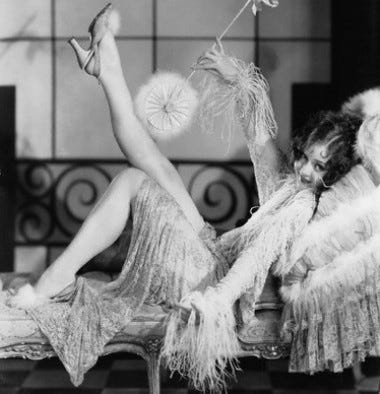
clara bow is another famous flapper icon. she was the original “it girl” - a phrase that came about because clara starred in a 1927 movie called “it.” clara bow epitomized exuberant flapper fashion and was imitated by women everywhere. she built her career off the flapper aesthetic - kind of like how i built mine off of barbiecore.
in 1920, the 18th amendment banned the sale of alcohol. backalley saloons and underground speakeasies began popping up and, unlike their once-legal counterparts, did not have to abide by segregation of race and gender. the harlem rennaissance birthed talented black jazz musicians who’d perform at these speakeasies and kick off the jazz age. the flappers’ favorite dance was the charleston, a dance style that was popularized by pianist james p. johnson. a major part of flapper culture has come from black people. it’s really the one constant in history - behind every cultural fad is a black person who did not get the credit for it.
the flappers’ partying, sexual freedom, and self indulgence pissed off a lot of people. what was unique about the flappers is they not only pissed off traditional women, but feminists as well. suffragettes - fresh off their victory for women’s voting rights, but also terrified of losing it - thought that the flappers’ extravagant behavior undermined their cause for women’s equality. first of all, they hated the use of the term “flapper.” the word originated in early 20th century britain as a slang for unruly teen girl. so basically, flappers were the “i’m just a girl” of the 1920s.
black flappers were criticized for that and another reason - “they were holding back racial equality.” josephine baker was a prime example of someone who didn’t adhere to respectability politics. she got famous from dancing in a banana skirt and performing with a cheetah on stage, really playing into stereotypes that white people had of african americans. on one hand, she portrayed black people as one-dimensional but on the other hand, her massive success earned her a platform that she then used to speak up for black people and civil rights.
the era of the flapper ended with the stock market crash of 1929. as people lost their entire life savings in the depression, the trends and lifestyle of the typical flapper was no longer affordable. indulging in lavish partying was not only expensive but wildly out of touch, considering people’s suffering. women traded in their sparkling dresses for neutral, basic outfits that paired with everything. many of them married because financial security was more likely in a family unit than going at it alone. maybe the gibson girl had returned, but she was irrevocably changed.
flappers and millennial women have a lot in common. millennials, like flappers, came of age in an era of optimism and the decent economic growth of the mid-2010s. we went to the club, dated on our own terms, even freed the nipple. we were criticized for being self-obsessed and promiscuous. gen z women often get criticized for being puritan, dressing in toned down neutrals, and opting to stay at home but can you blame them? women’s freedom has always synced with the economy. when you have money in the bank, you’re more likely to take risks on everything from going out to fashion to makeup to attitude. when you don’t have money, you opt for certainty - and there’s nothing more certain than tradition.
we may be living through our own conservative gibson girl era right now, but the flappers remind us that when women are given freedom, they spark movements and show the world what’s possible. and even when freedom isn’t guaranteed, there will always be those of us who respond, resist, and rebound.
so maybe what we’re due for isn’t a flapper comeback, but one where women don’t have to choose between survival and self-expression. i’m confident it’ll happen, because when times are bad, good times are just around the corner. if that sounds idealistic - good! the flappers were too. and look at their impact.
sources: ian drummond vintage, secrets of solo, social studies, history.com, britannica

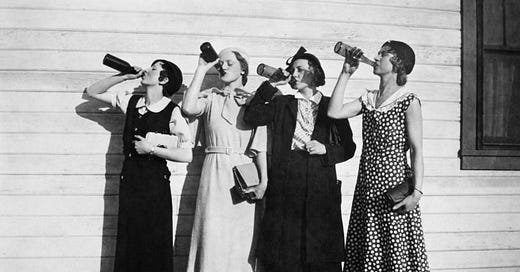



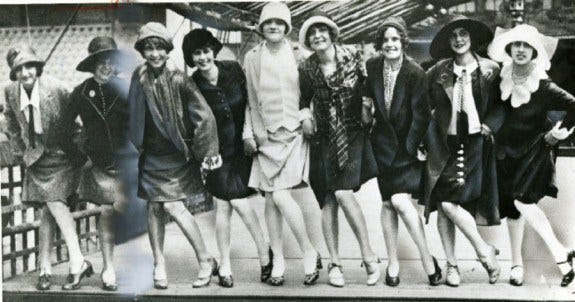
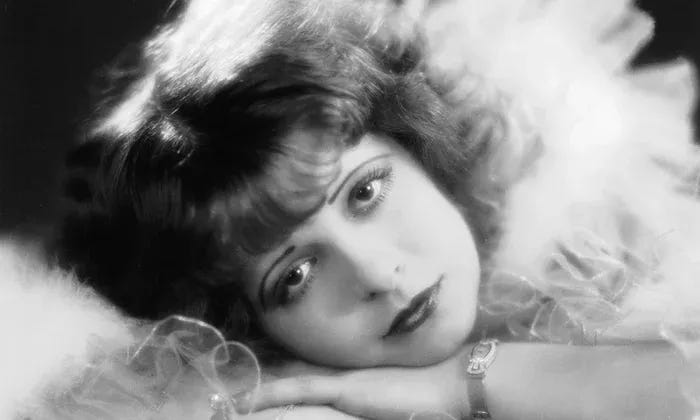
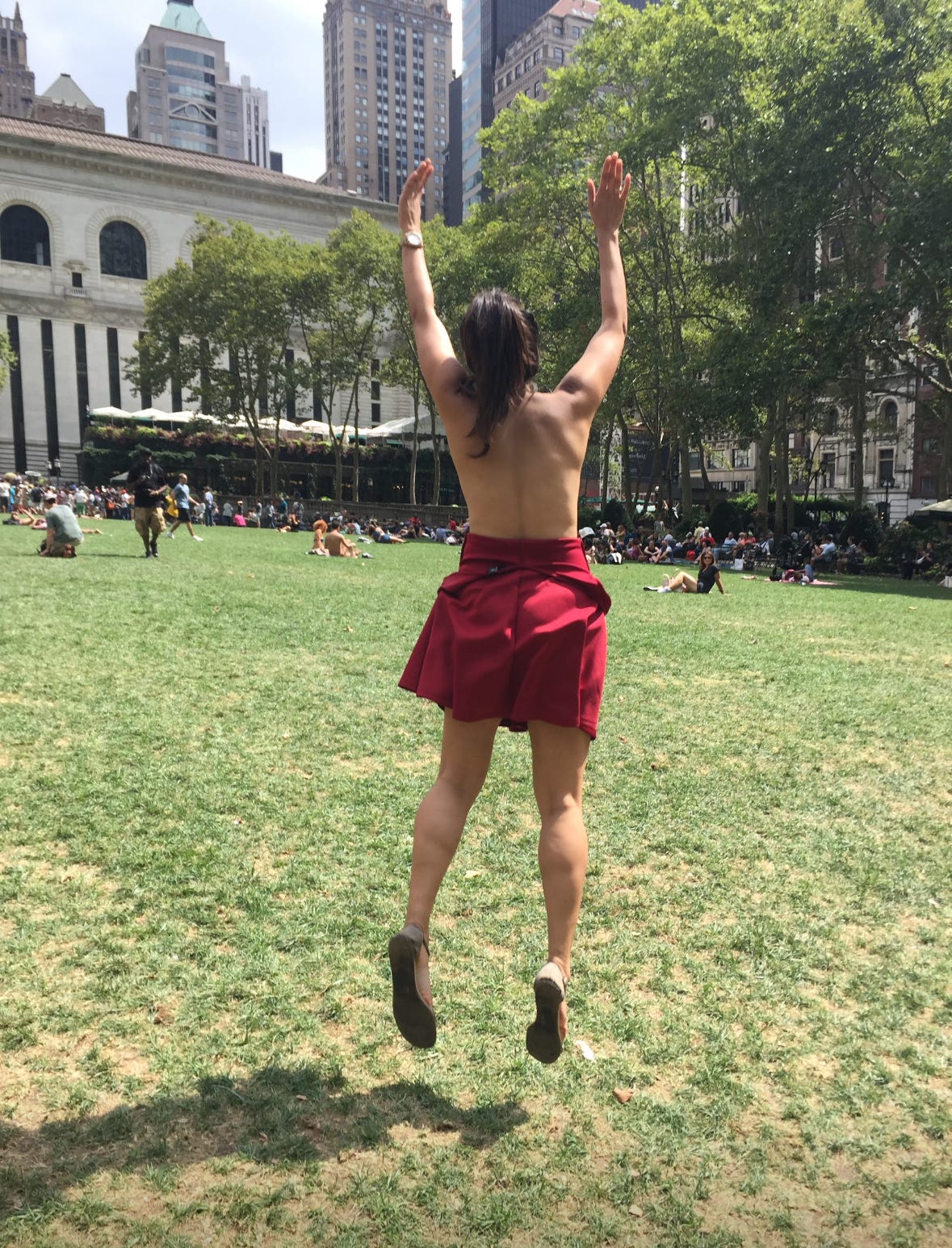
"so maybe what we’re due for isn’t a flapper comeback, but one where women don’t have to choose between survival and self-expression."
^I'm literally tearing up 😭 why do so many of the choices available to me as a woman boil down to this
Well done. Didn't even realize the badassery I was channeling with my flapper Halloween costume during college!
Yours is the only explanation I want about what’s happening in the world. Thank you for teaching me so much professor!!!!!